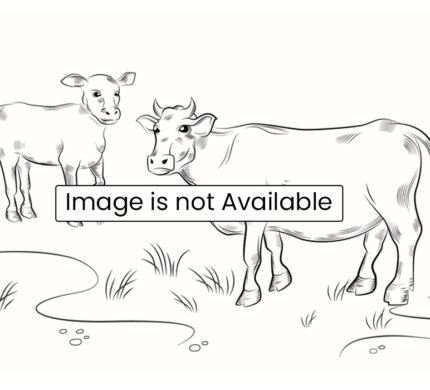Horro
- Temperature:38-39°C
- Milk:2 to 6 liters of milk per day
- Food:Hay, Silage and other feed supplements
- Pregnancy:Approximately 280 to 290 days
- Nationality:Ethiopia

General Information
Horro is a breed of cattle that is native to Ethiopia. The breed is primarily found in the highland areas of western and southwestern Ethiopia, where it is raised for both meat and milk production. The Horro cattle breed is well adapted to the local environment, with characteristics such as disease resistance, hardiness, and tolerance to harsh weather conditions.
They are medium-sized, with a short and compact body, a broad forehead, and a hump on their back.
They are considered to be an important genetic resource in Ethiopia, as they are well-suited to the local environment and have the potential to contribute significantly to the livestock industry in the country.
Where we find this cow to buy?
If you are located in Ethiopia, you may be able to find Horro cattle for sale through local livestock markets or by contacting breeders who specialize in this breed. Here are some steps you can follow to find and purchase Horro cattle:
01. Research breeders and livestock markets : You can start by researching breeders and livestock markets in the areas where Horro cattle are typically found, such as western and southwestern Ethiopia. You can try searching online or asking local farmers, veterinarians, or agricultural extension agents for recommendations.02. Contact breeders or sellers : Once you have a list of potential breeders or sellers, you can contact them to inquire about the availability of Horro cattle for sale. Be prepared to provide information about your location, your intended use for the cattle (e.g. meat or milk production), and any specific requirements you may have.03. Visit the breeder or market : If possible, it's a good idea to visit the breeder or market in person to inspect the cattle and assess their health and condition. This can help you to ensure that you are getting healthy and high-quality animals.

How to increase milk production in Horro
There are several strategies that can be used to increase milk production in Horro cattle. Here are a few examples:
01
Providing Horro cattle with a balanced diet and high quality forage can help improve milk production.
02
Proper herd management practices can reduce stress and promote health by providing clean water, comfortable bedding, and ventilation.
03
Milking techniques should be done regularly and gently to maximize milk production.
04
Breeding for traits such as high milk production and disease resistance can improve the overall productivity of Horro cattle.
Medicine
It’s important to note that the use of veterinary medicines should be carefully managed and monitored by a licensed veterinarian, as there can be potential risks and side effects. Here are a few examples of medicines that may be used to treat common health conditions in Horro cattle:
01
AntibioticsAntibiotics are used to treat bacterial infections in Horro cattle, such as pneumonia or mastitis.
02
AnthelminticsAnthelmintics are used to treat internal parasites in Horro cattle, such as worms or flukes.
03
Anti-inflammatory drugsAnti-inflammatory drugs may be used to treat Horro cattle arthritis or respiratory inflammation.
04
VaccinesVaccines should be developed to prevent infectious diseases in Horro cattle.
Pregnancy
Once a cow is pregnant, she will not go into heat until after she gives birth.
As the pregnancy progresses, the cow’s udder may become larger and more prominent.
Some cows may exhibit changes in behavior during pregnancy, such as becoming more docile or seeking out more food and water.
As the pregnancy progresses, the cow’s abdomen may become larger and more rounded, and her vulva may become more relaxed.
Important!
It’s important to monitor Horro cattle closely during pregnancy to ensure that they remain healthy and receive proper care. Regular veterinary checkups, proper nutrition, and appropriate vaccination schedules can all help to support a healthy pregnancy in Horro cattle.
Food
Horro cattle are typically raised for their milk production, and their diet plays a crucial role in maintaining their health and productivity. The specific dietary requirements of Horro cattle may vary depending on factors such as age, weight, and lactation status, as well as the availability of feed resources in their local environment. Here are some general guidelines for the diet of Horro cattle:
Forage, such as grass, hay, and silage, should make up the majority of the diet for Horro cattle. Good-quality forage is important for maintaining the health of the cow’s digestive system and providing necessary nutrients such as fiber.
Concentrates, such as grains and protein supplements, may be added to the diet of Horro cattle to provide additional energy and nutrients. The amount of concentrates in the diet should be carefully balanced to prevent overfeeding and weight gain.
They may require additional mineral supplements, such as calcium, phosphorus, and salt, to maintain their health and productivity.
Access to clean, fresh water is essential for Horro cattle, with up to 30 liters per day depending on temperature and lactation status.
Facts
Here are some facts about Horro cattle:
They are a breed of zebu cattle that are native to Ethiopia, and they are highly valued for their milk production.
They are typically small to medium-sized, with a distinctive hump on their shoulders and a short, glossy coat.
Horro breed adapted to harsh Ethiopian highlands, used for plowing and transporting goods.
They are raised in small herds and milked by hand for both household consumption and local markets.
They have been selectively bred for thousands of years by Ethiopian farmers, and they are an important part of the cultural heritage of the region.
They are known for their hardiness, resistance to disease, and ability to survive on low-quality forage and limited water resources.
Improved Horro cattle productivity through artificial insemination, better breeding practices, and improved nutrition and healthcare.
The Horro breed is an important genetic resource, and efforts are being made to conserve it and promote sustainable use.